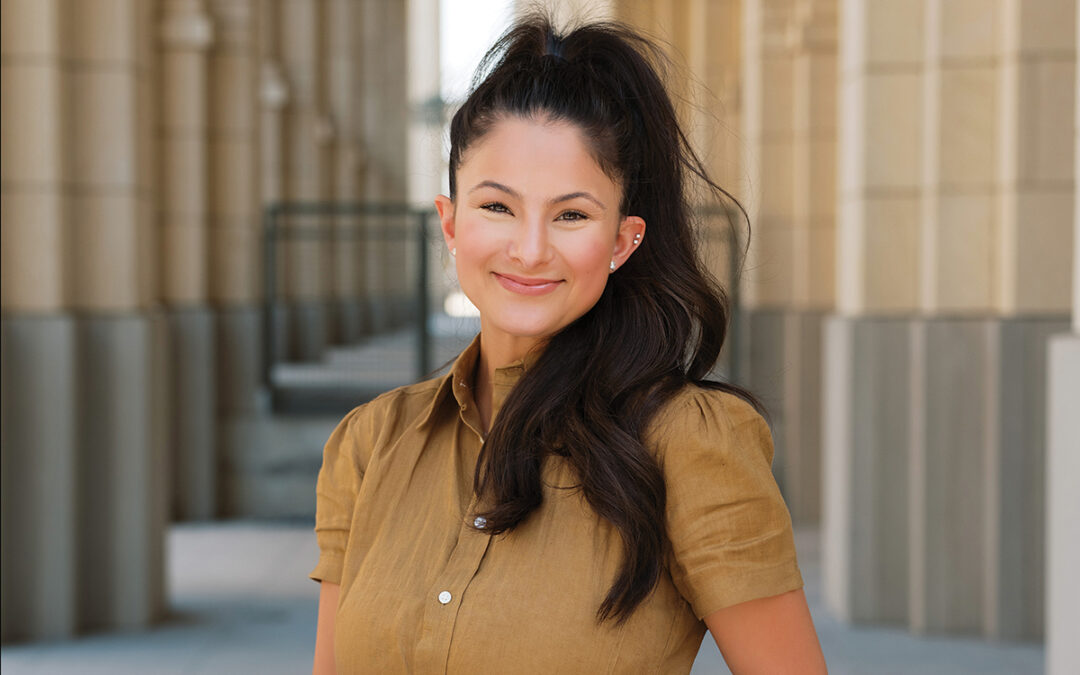understanding the power of balance
Peggy Clemons has been in middle school for at least 11 years — longer, if you count her own junior-high years in Alabama.
To those whose early adolescence is a thankfully repressed memory, that sounds like an extreme recurring nightmare. Not so, says Clemons. Middle-schoolers — braces, hormones, self-inked tattoos and all — have a well-hidden sweet side. “Some of them still love their teachers,” says the principal of Garner Middle School. “It’s a wonderful time to help students reach their full potential.” There are around 920 of them at Garner, which Clemons has headed since 1995. Midway through a sunny autumn afternoon, most are indoors, listening to an announcement on the public-address system. Garner has a substance-abuse problem, and the substance is spray cologne. From now on, says a male assistant principal, students must leave it in their lockers. “If you take your cologne out of your purse and spray it on during class,” he explains, “other students may be allergic to it. Teachers may be allergic.” Clemons smiles. “We try to make the PA a teaching moment,” she says. The spray-cologne restriction is part of an ongoing respect campaign, in which Garner’s sixth-through-eighth-graders are taught to consider the feelings of others before they act. There’s a bright orange poster on the door of Clemons’ office that says, “Character counts at Garner.”
Middle school may be the overlooked middle child of education, but this veteran educator believes it serves a distinct purpose as a behavioral proving ground. “When a child is leaving the elementary environment, it’s a big transition,” says Clemons. “Here, there’s not as much structure, there’s a little more freedom.” Students at the ages of 11 to 14 are learning to be more independent, to make more decisions on their own. At the same time, school is becoming more demanding — a bigger school, different teachers and more homework. It’s a time to work on social skills, study habits and organization. “What they learn here,” says Clemons, “will follow them into high school.” She has been there, too, during more than 30 years as an educator. Besides an earlier stint as assistant principal of Nimitz Middle School, Clemons has taught physical education, science and special ed. She has been a school counselor as well as a classroom teacher and administrator, both at the elementary and high school levels as well as in middle schools. Her re′sume′ is so comprehensive, it reads like a blueprint for advancement to administration. That wasn’t what Clemons had in mind, though, as an education major at Livingston University in Livingston, Ala. Since high school, when she was a teaching assistant at an elementary school, she says, “I wanted to make a difference, and I was interested in education.” When she graduated in 1970, “I envisioned myself at age 65, still teaching physical education, still leading the exercises,” she says. “But I found myself going down a different road.”
The geography of that journey became more varied with her marriage to Larry Clemons, an Air Force pilot whose assignments took them from Alabama to Florida and Hawaii. The couple has two children, Jennifer Crabtree, 34, and Jay Clemons, 32, and wherever the family moved, Peggy Clemons continued to work outside the home. “In the early years, it was easy, because my mother lived nearby,” she says. Later on, school hours meshed well with her children’s. “I only missed one activity that I can remember,” she says. “Jennifer was in a school play, and I was an officer in a counselors’ organization that had a meeting I had to go to.”
While working full time, Clemons went back to school to get her first master’s degree in counseling. It wasn’t because she was tired of classroom teaching. “Students were asking me questions outside of academics, to which I did not know how to respond,” she says. “I wanted to become a counselor in response to students’ needs.” As for administration, “I didn’t think about it up front,” Clemons says. After years of teaching, she had gained experience with curriculum planning and staff development. While she was teaching special ed at Roosevelt High School — like Garner, a campus in the North East School District — she had an opportunity to fill in for an administrator on leave. “I enjoyed the communications aspect,” she says. “It seemed like another way to help students.” When an opening for an assistant principal came up at Nimitz, Clemons was encouraged to apply for it; while there, she earned a second master’s, this time in educational administration from Southwest Texas State University in San Marcos.
By that time, her own children were working on their own college degrees. Moving into an administrative position, with less predictable hours, was “something I needed to do after the children were older,” Clemons says. In her present job, for instance, she may work from 7:30 a.m. to 7 p.m., depending on meetings and other responsibilities. “Some days, I may be here until 9 p.m.; other days, I can leave at 4:30 p.m.,” she says. While doing assessment of principals for the Texas Education Agency’s Region 20, she shifts to an occasional noon-to-8 p.m. workday. To make this jumpy schedule work with her personal life, Clemons practices what Garner tries to teach its students: She’s well organized, with what amounts to a black belt in time management. She keeps in touch with her elderly parents and grown children (Jennifer, a bank executive, and Jay, a Navy intelligence officer) through mobile-phone calls during her 20-minute morning commute and while shuttling between other appointments. “It’s just enough time to check in and have a good conversation,” Clemons says. To stay fit, the former phys-ed teacher books a twice-weekly appointment with a personal trainer, a regular time slot she shares with one other woman. “If I signed up for a class somewhere, it would go on without me if I decided to stay here and go through my e-mail,” she says, gesturing at the computer on her desk. “This way, I have a commitment.” Exercise gives her “a second wind of energy,” but so does singing. At least once a week, she spends an evening “on the risers” as a member of the Alamo Metro Chorus, a 100-member women’s barbershop-harmony group that competes at the international level. Singing four-part harmony is a passion she shares with her husband. Retired Air Force Lt. Col. Clemons works at Randolph AFB designing educational programs for pilots, but also is a member of a chorus and often coaches other singing groups.
“For us, singing isn’t a hobby, it’s a lifestyle,” she says. The couple makes frequent weekend trips to participate in competitions and for coaching sessions. (She leads the choruses in warm-ups, while he analyzes their live and on-video performances.) When they fly, she keeps up with reading — professional books and journals leavened with occasional mystery novels. If there’s anything missing in her life, it’s more education — but on a smaller scale and of a different kind. Clemons says that after retirement, she hopes to take piano lessons and art and pottery classes. But when it comes to her nearer future, she says, “I’m enjoying being principal so much, I haven’t thought of going beyond this job.” Clemons likes her work so much, she still supervises Garner’s sixth-grade lunch period. It’s one of the ways — along with classroom visits and talking with teachers — she keeps up with what students are doing and thinking. During her three decades in education, she says, “I don’t think it’s that the students have changed; it’s our society that has changed. I don’t think students are different, but they bring in different values.” Thirty years ago, she says, “We didn’t have road rage or drive-by shootings or the things (students see) on TV or in movies. What our children are exposed to is what has changed.” Some school changes have been positive. Clemons believes that the Texas standardized-testing program has led to the development of more innovative, effective curricula. “We might remember courses where you read a chapter in a book and answered questions about it,” she says. “You don’t see that now. Teachers are more interactive with students, and students are learning how to problem-solve and evaluate a situation. I get goosebumps observing (classes) sometimes.” Teaching, after all, is where principals come from, and Clemons doesn’t forget her roots. There’s a row of glass jars along her window, each filled with small treats — Goldfish crackers, Tootsie Pops and other wrapped candies. Can this trim, disciplined woman have managed to integrate snacks like these into her balanced diet? No, she says: “Those are for the teachers.”
By Paula Allen









0 Comments